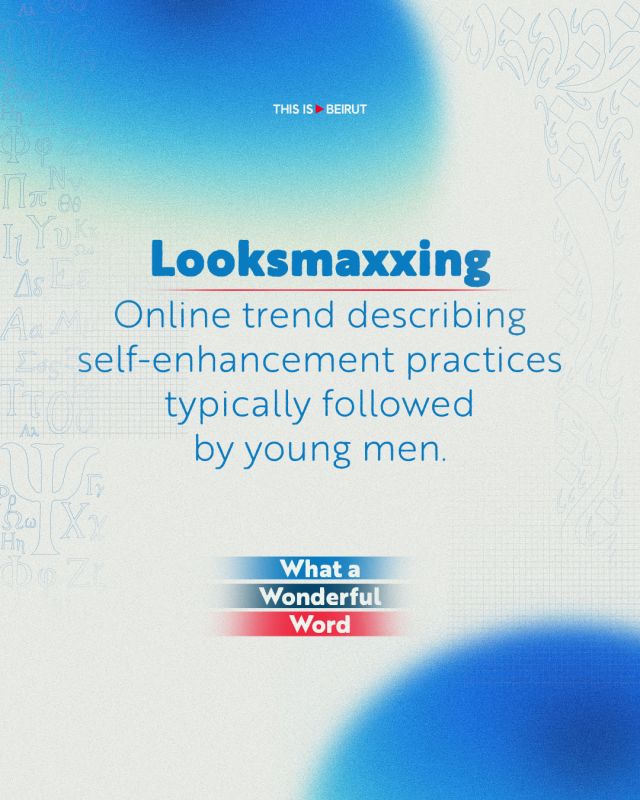
Once the burden of women alone, the pursuit of unattainable beauty ideals is now spreading to men. Looksmaxxing, a trend born online that urges men to “optimize” their appearance, reveals how social media has turned appearance into a universal form of capital, crossing gender lines.
On TikTok, forums and countless corners of the web, a growing trend grips young men: looksmaxxing, the drive to “maximize” one’s appearance. This isn’t just grooming or fitness, it’s conforming to rigid aesthetic ideals with extreme methods, turning bodies into commodities. What is the origin of this term? What vocabulary has it generated? And what are its risks for impressionable youth today?
A Word Born Online
Looksmaxxing first appeared in internet slang and has since been recognized by mainstream dictionaries. Merriam-Webster’s slang entry defines it as “practices, especially among young men online, to enhance their physical appearance.”
Online communities use looks + maxxing (a stylized form of maximizing) to denote this effort, with the extra “x” nodding to digital slang.
Looksmaxxing is described as a lifestyle term that emerged in incel forums, online spaces where men who feel unable to attract romantic partners discuss their frustrations and views of attraction. The movement later spread to mainstream platforms such as TikTok and social media groups. It distinguishes softmaxxing (skincare, exercise, grooming) from hardmaxxing (plastic surgery, steroid use, extreme measures), the latter being far more risky and contentious.
Thus, looksmaxxing is a lexicon, a performance model and an ideology of the body enhanced by digital culture.

The Digital Stage: Platforms, Practices and Pressures
TikTok and aesthetic forums have become the laboratories of looksmaxxing. Videos often highlight dramatic before/after transformations: the grooming, the filters, the hustle. Appearances become signals of worth, validated through likes and algorithmic amplification.
This trend prioritizes traits like sharp jawlines, large eyes or high cheekbones. These features are coded in community jargon like “SMV” (sexual market value), “IPD” (Interpupillary Distance). Some influencers promote methods like mewing (tongue placement techniques), chin implants or even bone smashing, a fringe idea urging individuals to physically impact facial structures.
Reports show how looksmaxxing sites affect young men and boys, increasing body image dissatisfaction and encouraging dangerous interventions.
Chasing Unattainable Ideals
While some practices such as better hygiene or consistent exercise are relatively harmless, the shift toward extremes carries serious risks.
Medical websites flag mental health dangers: looksmaxxing is often driven by low self-esteem, body dissatisfaction and comparison addiction. Exposure to extreme forums can further normalize risky behavior.
On a deeper level, looksmaxxing is intertwined with incel ideology, the idea that appearance determines romantic success. This frames physical change as a tool for power or validation, rather than self-care.
Moreover, critics argue that looksmaxxing sustains harmful beauty norms and fuels inequality: those who cannot afford surgeries or filters are marginalized.
From Enhancement to Economic Value
Behind the idea of “optimization,” looksmaxxing follows a clear economic logic. The trend’s virality fuels a booming market: men’s cosmetics, quick-fix surgeries, paid coaching, beauty filters.
It reflects a worldview where beauty equals power, success and dominance. This obsession also speaks to a deeper need for recognition: beauty is no longer just a means of seduction, but a way to exist in the digital space. The body itself has become a product, fine-tuned for online attention.
May we see, one day, the rise of mindmaxxing that would value the interior life, critical thinking and authenticity over the polished exterior.






Comments